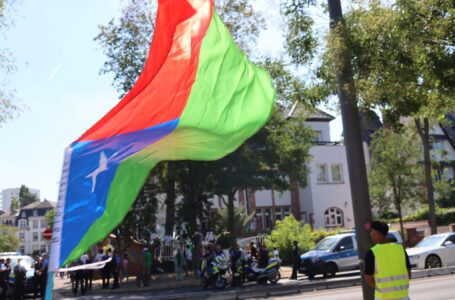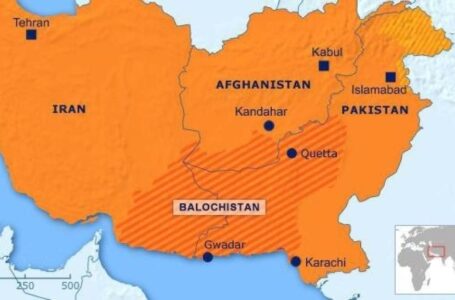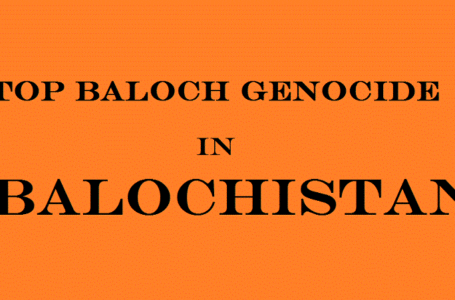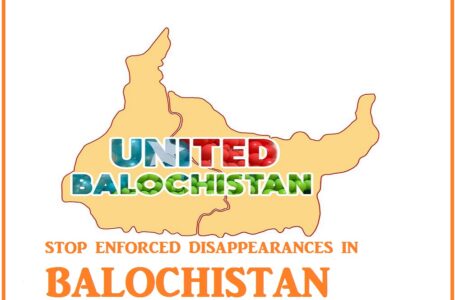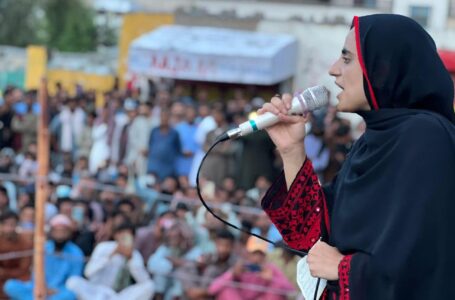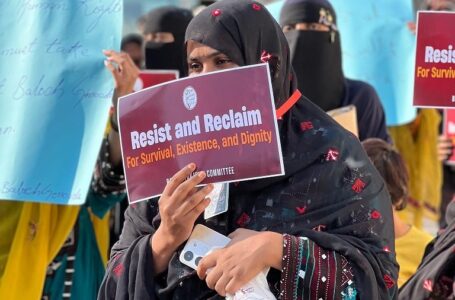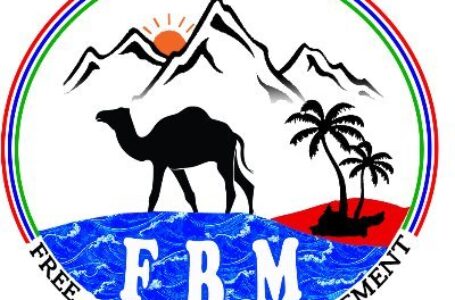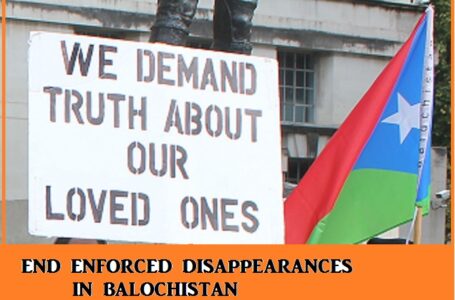The Case for a Free Balochistan: A Catalyst for Regional Stability and Prosperity
China in Balochistan: CPEC and the Shifting Security Landscape of Pakistan
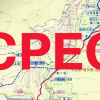
By Harrison Akins
Graduate Research Fellow Howard, H. Baker Jr. Center for Public Policy, University of Tennessee
In 1962, Henry Kissinger, then serving as a consultant for the National Security Council, was dispatched by President Kennedy on a fact finding mission to Pakistan, a Cold War ally. During his visit, a reporter probed him for the U.S. position on the recent Baloch insurgency. Dr. Kissinger infamously responded: “I wouldn’t recognize the Balochistan problem if it hit me in the face.”
Kissinger’s display of ignorance on Balochistan has unfortunately been a common theme for decades in foreign governments’ interactions with Pakistan. This has even been a problem for Pakistanis. In one example of this, a 2014 BBC Urdu report on Balochistan featured interviews with residents of the Punjabi capital Lahore who were unfamiliar with Balochistan’s history, culture, and contemporary problems beyond simple and crude stereotypes and were even unable to mention one city located within the province.
Yet, it is the nature of the current security environment that little known regions, whose names remind one of dusty old books recounting historical exploits of British officers among the tribes of faraway and forgotten places, have now become the focus of international politics.
The sparsely populated province of Balochistan on the border with Iran and Afghanistan has now taken center-stage in China’s growing relationship with Pakistan and the development of the China-Pakistan Economic Corridor (CPEC) linking China’s western city of Kashgar with Balochistan’s Gwadar Port nestled 3,000 kilometers away on the Arabian Sea. This investment will further allow the exploitation of the resource-rich province, especially its gas fields that already supply a third of Pakistan’s energy needs. Despite its rich resources and high levels of investment, however, Balochistan has suffered from chronic neglect, underdevelopment, and lack of political representation that has led to five different rebellions over the past 60 years. As the Pakistani journalist Mahvish Ahmad argues, the history of Balochistan is a history of betrayals by the Pakistani state.
The heavy hand of the government has only served to further flame the fans of Baloch nationalism and the desire for independence. Chinese investments in CPEC have landed in the middle of a difficult security situation with the potential to further exacerbate the underlying grievances that drive the current conflict. In order to understand how Chinese economic intervention impacts Balochistan, it is necessary to analyze the history of conflict in the region through the frame of the tension between center and periphery. This conflict dates back to the days of the British Empire and the foundations of the Pakistani state and has followed a rhythmic pattern of government attempts to assert control and the periphery’s attempts at resisting it.
On the periphery of the Subcontinent’s historic empires and highly resistant to outside invaders, Balochistan is a land of extremes—burning deserts, towering peaks, freezing winters, and fierce tribes. It has been described as a veritable moonscape, one in which Alexander the Great famously got lost during his return march from India.
Historically, the reach of any government into this harsh landscape has been limited, leaving space for tribes and their traditions to govern for centuries. Social interactions among the Baloch people, comprising the majority of the province’s population, were based on a code of honor known as Balochiat, the “way of the Baloch”, emphasizing revenge and hospitality. The British Empire found it necessary to rule these remote areas indirectly through their tribal structures to maintain law and order, with one British official arguing that their methods “are finer than any we could offer them.”4 Though Baloch tribal traditions have also been criticized for their incessant feuding, reliance on violence, and treatment of women. The Baloch leader Nawab Akbar Bugti, for example, once bragged to an American scholar about killing his first man when he was only 12 years old.
Following Partition in 1947, Balochistan’s integration into the new state of Pakistan was anything but a peaceful transition. The underlying cause for the initial outbreak of conflict was the political position of the region’s four princely states. Under the British Raj, the 562 princely states were not formally integrated into British India but existed within its political boundaries as autonomous political units under subsidiary alliance with the colonial government. Because of the nature of their political relationship with the British Raj, the princely states were not automatically included in the newly independent countries of India and Pakistan. Rather, the rulers of each princely state were granted the right of choice regarding which new state they would join. British Prime Minister Clement Atlee even left open the possibility of being granted their own independence.
In 1947, three of the Baloch princely states—Makran, Las Bela, and Kharan—agreed to join Pakistan. The ruler of the fourth, the Khan of Kalat Ahmad Yar Khan, however, initially wanted to establish an independent state. Following lengthy negotiations and pressure from Pakistan, he shifted his position and signed the Instrument of Accession to join Pakistan on the promise of maintaining internal autonomy. Not all within his domain were pleased with his decision. The Khan’s brother, Prince Abdul Karim, led a revolt beginning in July 1948 against the new state, seeing it as a vehicle for Punjabi domination of Balochistan. He stated in a letter to his brother, “From whatever angle we look at the present Government of Pakistan, we will see nothing but Punjabi Fascism. The people have no say in it. It is the army and arms that rule… There is no place for any other community in this government, be it the Baloch, the Sindhis, the Afghans or the Bengalis, unless they make themselves equally powerful.”6 After two years of fighting, this revolt was finally defeated by the Pakistani military.
Subsequent separatist movements were similarly in response to the weakening of Balochistan’s political position within Pakistan. The second rebellion broke out in 1958 following Kalat’s autonomy being removed as it was dissolved and absorbed administratively into West Pakistan. This was in accordance with the “One Unit” policy, which created a single western administrative unit as a counter-balance to the electoral majority of the Bengalis in East Pakistan. The One Unit policy was abolished in 1970 with the government recognizing Balochistan as an equal province. Yet, three years after this, another major revolt erupted when Prime Minister Zulfiqar Ali Bhutto dismissed the Baloch provincial government and arrested its key leadership as a means of centralizing his own power. Balochistan’s leadership saw this as essentially a colonizing effort by the Punjabi-dominated Pakistani government. The leader of the Marri tribe in Balochistan, Nawab Khair Baksh Marri, declared: “The foremost thing is that Punjabis should quit Balochistan…I can coexist with a pig but not with a Punjabi.” This revolt was defeated in 1977 with the use of nearly 80,000 troops and assistance from the Iranian air force, as Iran feared the violence could spill over the international border among its own Baloch population. By the conclusion of the conflict, nearly 10,000 Baloch had been killed.
Other rebellions emerged directly in response to the exploitation of the province’s natural resources, especially its gas. Many Baloch saw development projects as producing little benefit
for the local population and conducted without their input or participation, underlined by their lack of political autonomy. From 1963 to 1969, militants waged a guerilla campaign against the government to force them to share revenues from the Sui gas field in the Bugti tribal area, the largest gas field in the province which alone accounts for 6% of Pakistan’s gas production today.
The most recent Baloch insurgency against the state emerged in the wake of the August 2006 death of Nawab Akbar Bugti, the head of the Bugti tribe and former Chief Minister of Balochistan, by military forces under orders from President Pervez Musharraf. There has long been tension between the Bugti tribe and the Pakistani state as the Bugti clamored for a share of the revenue from natural resources on their land, especially from the Sui gas field, and a moratorium on the construction of military bases. The precipitating event that pushed this tension into direct confrontation was the 2005 rape of a female doctor by a Pakistani military officer. The doctor was working in the Bugti Agency and therefore under the protection of the Bugti tribe as a guest according to their code of honor.
When Nawab Bugti claimed that her rape was a violation of Baloch honor, President Musharraf supported his fellow officer and a military court found him innocent. Members of the Bugti clan responded by attacking the Sui gas field with rockets, mortars, and small arms fire. The response from the government was swift and harsh, with Musharraf ordering in tanks, helicopters, and an additional 4,500 soldiers to safeguard the gas installation. In a television interview on January 4, 2005, Musharraf threatened the Baloch, “Don’t push us. It is not the 70s, when you can hit and run, and hide in the mountains. This time, you won’t even know what hit you.”10 Nawab Bugti responded, “As long as the perpetrators of this heinous crime are not dealt with, there can be no talks.”
With both sides refusing to negotiate, Nawab Bugti, the leader who had initially helped pull Balochistan into the Pakistani fold in 1947, soon found himself fleeing into the hills with government forces in pursuit. The following year, in a military strike against the cave in which he was hiding, Nawab Bugti was killed. Musharraf was unwilling to admit responsibility and, in an article with Pakistan’s The News, would later claim that Bugti’s killing was “a clear case of a self-inflicted casualty.” In the same article, he denounced the Baloch tribal leaders as “very vicious, unforgiving and decadent” and accused them, especially the Marri and Bugti tribes, of “killing people of other ethnicities (especially Punjabis), blowing up and damaging national infrastructure…and challenging the writ of the government.” He stressed that Balochistan “needs to be dealt with an iron hand.”12 Baloch journalist Malik Siraj Akbar noted the irony of his killing: “Akbar Bugti was the only link with Pakistan, and by killing him Pakistan has effectively cut off links to the Baloch people.”
The death of Nawab Bugti pushed a nascent Baloch resistance pushing for greater autonomy into a full-fledged rebellion fighting for independence. The Bugti tribe would go on to put a price on Musharraf’s head of 1 billion rupees ($9.5 million) and a 1,000-acre plot of land in Quetta. Baloch militant groups began harassing, kidnapping, and killing communities that settled in Balochistan from other areas of the country, especially from the Punjab who they saw as taking local jobs from the Baloch. When trains and buses were attacked, the groups would single out passengers based on their ethnicity.
In response, government forces employed a torture, kill, and dump policy for dealing with the growing unrest, with many Baloch activists and suspected armed separatists disappearing. According to a UN fact-finding team’s 2013 report, 14,000 individuals have gone missing.14 Nearly 1,000 bodies of these missing persons were discovered between 2011 and 2016, often riddled with bullet holes.15 Many of the bodies also appeared with messages carved into their bloody chests, such as “Pakistan Zindabad (Long Live Pakistan)” or “Eid Gift for Baloch”. One Baloch journalist, who received political asylum in the United States after receiving a number of death threats, stated in 2012, “At least eight of my Baloch journalist friends have been killed over the past year.” 16 Scholars, journalists, and leaders, the “cream of the Baloch professionals”, were being deliberately targeted.
Given the history of conflict in the province, many Baloch have expressed alienation from Pakistan and feel that Balochistan is not part of the Pakistani nation. Baloch nationalists declared Pakistan’s Independence Day on August 14, 2012 as “Black Day.” Akbar Bugti’s son, Nawabzada Jamil Bugti, stated after his father’s death, “I don’t see how any honourable Baloch can celebrate Pakistani independence. For us it has been sixty years of slavery, barbarism and torture”.17 During the Pakistan television show Policy Matters with Nasim Zehra in which the host was interviewing Baloch students about the situation in Balochistan, one young Baloch woman started her comments by stating, “The first thing I want to tell you is that I am not Pakistani. My identity is Baloch.”18 In an interview with BBC Hindi, Baloch activist Mazdak Baloch, who has been in exile in India since 2016, similarly stated, “We are not Pakistani. We are not of any concern for Pakistan. We are Pakistan’s colony.”19 He said in an earlier interview, “Call me a dog, but not a Pakistani. I am a Baloch.” He went on to explain: “Because there is no education, there are no jobs. A common Balochi can find only menial job. Islamabad has appointed Pakistani Muslims in all important positions in Balochistan. Its army has created a mess in the entire region. The economic resources of our land are plundered. Pakistan has opened the doors for Chinese companies for mining coal reserves and other natural resources.”
Gwadar, meaning the “door of wind” in Balochi, is a hammerhead shaped peninsula at the westernmost edge of Balochistan’s coastline on the Arabian Sea, an area historically populated by Baloch fishermen. Originally a part of the Khanate of Kalat and then transferred to the Sultan of Muscat in 1784, Gwadar was purchased by Pakistan from Oman for 3 million pounds in 1958. The region has historically been underdeveloped with little infrastructure. By the 1980s, the surrounding region, an area with a 470-mile long coastline, had only five miles of paved road, leading from the Commissioner’s house to the small airport.21 A February 1980 Washington Post article referred to Gwadar as “a barren patch of earth and sand” that “does not have much to offer visitors.”
Gwadar, however, was always of strategic importance for competing nations in the region given its naturally deep warm-water port and geographic proximity to the Middle East. It was for this reason that the state-owned China Overseas Port Holdings officially acquired the Gwadar Port in 2013, whose construction began in 2007 as a joint effort between Pakistan and China, to serve as the wellspring of the China-Pakistan Economic Corridor (CPEC), connecting Gwadar with Kashgar in China’s western Xinjiang region. This effort expands China’s presence in the province as state-owned Chinese companies had already established a foothold through mining contracts such as the Metallurgical Corporation of China leasing Balochistan’s Saindak Copper and Gold mine in 2002. President Musharraf who began the port’s development, hoped to use Gwadar and CPEC as engines to drive the faltering Pakistani economy and transform this barren strip of coastline into a new Dubai or Shenzhen.
CPEC is part of China’s larger “One Belt, One Road” economic initiative designed to build new infrastructure and trade networks seamlessly linking China with Asia, Africa, and Europe and help shape economic globalization towards a Chinese model. The $124 billion project, designed to be a 21st century Silk Road, was announced in a May 2017 conference in Beijing with Pakistani Prime Minister Nawaz Sharif in attendance. At the conference, Chinese President Xi Jinping announced, “It is our hope through the Belt and Road development, we will unleash new economic forces for global growth, build new platforms for global development, and rebalance economic globalization so mankind will move closer to a community of common destiny.”
Gwadar Port, with the capacity to handle 19 million tons of crude oil per year, became officially operational on November 13, 2016 marked by a grand opening ceremony presided over by Prime Minister Sharif. In addition to the port, China has already invested $10.63 billion in the construction of a 2,000-kilometer trade network of roads and railways in Pakistan to move goods and resources and expand the extraction of Balochistan’s many resources by Chinese companies. China’s investment in Pakistani infrastructure for CPEC is expected to reach $46 billion by 2030. General Raheel Sharif, the former Pakistani Army Chief of Staff, stated in July 2015, “CPEC and Gwadar Port will be built and developed as one of the most strategic deep sea ports in the region at all costs.”
The beginning of Gwadar’s construction in 2007 came as the Baloch rebellion in the wake of Bugti’s killing was beginning to pick up steam. The local population saw CPEC’s development as a means of settling greater numbers of outsiders in the province. Chinese workers have increasingly filled much of the need for both skilled and unskilled labor, as well as serving in senior management positions. The number of Chinese who entered Pakistan in 2016, for example, is estimated at 71,000.26 According to a report by the Federation of Pakistan Chambers of Commerce and Industry, Chinese nationals could outnumber Baloch natives by 2048 given the current influx rate.
Many Baloch complained that while the port and its supporting infrastructure throughout the province saw high levels of investment this did not benefit the local community. In spite of the billions of dollars invested, a 2016 report by Pakistan’s Ministry of Planning, Development, and Reform found that 71% of Balochistan’s total population still lives in multidimensional poverty, compared to 31% in Punjab and 43% in Sindh.28 The nizam, or mayor, of Gwadar, Majid Sohrabi, who won election in 2005 saw the uneven development patterns in the interactions with his constituents. “Gwadar is supposed to be a city for the future, but every day these people are crying about water and basic health facilities. If the government can build a port, why can’t they build a new school?”29 As poor residents of the city struggle daily for their basic needs like food and water, developers are focusing on building five-star resort hotels and new shopping centers, with land being offered at below-market prices and promises of a “forty-year tax holiday.”
Many local communities throughout Balochistan have also been displaced as a result of land acquisitions needed for the construction of highways and thoroughfares. In an interview with water rights activist Sharif Shambazi, a local Baloch fisherman complained, “They enter our homes and turn us out, settling others from far away. If someone breaks into your home and throws you out, and you scream your powerless scream, can you be blamed? These people think we oppose mega-projects. We don’t. But we’re never consulted. None of this is built for us.”30 As of January 2017, according to the Balochistan Human Rights Organization, 2,578 families have been displaced from their homes.
Beginning in 2007, terrorist attacks within Balochistan saw a steady increase, with the number of total attacks increasing by an average factor of 1.5 per year between 2007 (with 35 attacks) and 2015 (with 483 attacks).32 Many of these attacks, most notably by the Balochistan Liberation Army, have targeted the infrastructure projects and Chinese workers around the Gwadar area. As a result of this, the increase in development has been paired with an increase in military presence. Gwadar has been effectively turned into a militarized zone with security forces an ubiquitous presence for the local population. Pakistan has allocated a 15,000 person military force for the protection of Chinese workers and the convoys of trucks carrying goods through the province. China has also contributed to the militarization of the area, with the present Khan of Kalat Mir Suleman Dawood referring to CPEC as a “Chinese military project”.33 In November 2016, following a bomb attack on a Sufi Shrine in Balochistan’s Khuzdar District that killed 52 and wounded 106, China dispatched its warships, in coordination with the Pakistan Navy, to safeguard the Gwadar Port.
As Chinese investment in Pakistan increases, however, it is not only Balochistan that stands to be impacted. CPEC follows a route that brings it through the sensitive northern region of Gilgit-Baltistan in Pakistan-administered Kashmir, threatening to disrupt its delicate security balance. Local residents, as well as India, have raised objections to the growing presence and influence China will have in the region through CPEC. During a series of protests against China and CPEC in 2016 and 2017, people in Gilgit-Baltistan expressed fear that the construction of CPEC, referred to as the ‘Road of Gulami (Slavery)’, will lead to the further exploitation of their water resources without financial benefit to the region and an increase in the presence of heavy-handed security forces. In response to 2016 protests, the then Minister of Planning, Development, and Reforms Ahsan Iqbal stated that protestors against CPEC would be charged under Pakistan’s anti-terrorism laws.
An oft-repeated phrase heard at official gatherings of Chinese and Pakistani officials is “Chini Pakistani bhai-bhai”—China and Pakistan are brothers. This sentiment represents the growing and close relationship between the governments of these two nations dating back to 1950 when Pakistan was one of the first nations to recognize the People’s Republic of China after the Communist victory in 1949. China would prove crucial to Pakistan’s development of its first nuclear bomb in 1998, reliant as it was on Chinese uranium and expertise, and this relationship has continued to grow as a result of strategic security issues such as China’s growing concern with terrorism in the region, economic investment, and mutual antipathy towards India.35 The strengthening regional ties were clearly seen in 2015 when China blocked an Indian request for information about terrorists in Pakistan from the United Nations sanctions committee, and, in 2017, when China provided $1.2 billion in bailout loans to Pakistan in order to prevent a currency crisis.
As the Trump Administration increasingly and aggressively denounces Pakistan as merely a safe haven for terrorist group and turns U.S. attention inward, anti-American sentiment continues to rise in Pakistan and drive it further into the arms of China.36 This process is clearly evident in regards to arms transfers. In 2011, the U.S. and China supplied the Pakistani military with the same proportion of its armaments—39% and 38%, respectively. By 2016, however, that number had shifted dramatically with Pakistani receiving 63% of its armaments from China and only 19% from the U.S. Pakistan is now the largest recipient of Chinese military armaments, receiving 35% of China’s total arms exports.
As CPEC continues to develop and grow with increased investment in Balochistan’s economy and infrastructure, there is little indication the underlying drivers of conflict such as economic inequality, lack of opportunity, and political underrepresentation will be addressed in any meaningful way. As the government further opens up the region to outside investment and settlement, it is expected that the problems faced by the Baloch will be exacerbated and the instability of the region to continue.

